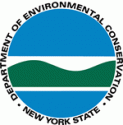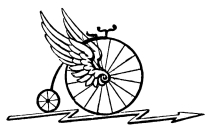Transport of Lime Part of Effort to Mitigate Effects of Acid Rain and Create Hospitable Habitat for Brook Trout in Hawk Pond
 As part of Governor’s Cuomo’s NY’s Open for Fishing and Hunting initiative and a collaborate effort to mitigate the impact of acid rain and restore brook trout to the Adirondacks, state helicopters delivered 34 tons of lime to an acidified pond in the Five Ponds Wilderness Area in the town of Webb, Herkimer County, New York State Department of Environmental Conservation (DEC) Regional Director Judy Drabicki announced.
As part of Governor’s Cuomo’s NY’s Open for Fishing and Hunting initiative and a collaborate effort to mitigate the impact of acid rain and restore brook trout to the Adirondacks, state helicopters delivered 34 tons of lime to an acidified pond in the Five Ponds Wilderness Area in the town of Webb, Herkimer County, New York State Department of Environmental Conservation (DEC) Regional Director Judy Drabicki announced.
On March 6 and 7, approximately 40 DEC staff and New York State Police helicopter crews conducted the liming operation, which included 46 helicopter flights to transport 1,500 pounds of lime from a staging area near the boat launch at Stillwater Reservoir to Hawk Pond. The lime was deposited on the ice at the pond and later spread across the frozen surface. The liming of acidic lakes or ponds is a management tool used to neutralize the water’s acidity and create water quality that is more favorable for fish and aquatic life. When the pond thaws this spring, the lime will enter the water and reduce its acidity level.
“Each year, fisheries staff select an Adirondack pond for liming to reintroduce brook trout in the Adirondacks,” Regional Director Drabicki said. “This effort involves months of planning and coordination with DEC operations staff, forest rangers and forestry staff, along with State police helicopters, pilots and crews. This joint effort is critical to reclaim waters impaired by acid rain and restore native habitats to these Adirondack waters.”
This operation is the first lime treatment for Hawk Pond. This fall, two strains of brook trout will be stocked in the pond: the Horn Lake strain of brook trout, and a heritage/domestic cross. Once the fish have had the chance to spawn, biologists will be able to use the genetics for each strain of the stocked fish to determine which parents are producing offspring and which strain is performing the best in the pond. This research will help guide future management decisions involving Adirondack brook trout ponds.
DEC fishery staff is optimistic that these operations will successfully return brook trout to some large Adirondack ponds and lakes. Larger water bodies in the Adirondacks maintain a deep cold water layer right through the summer (referred to as stratification), unlike the smaller ponds where water layers mix, which results in warmer water temperatures that are not as suitable for brook trout.
For additional information on DEC’s liming program or a list of Adirondack trout ponds, contact the Watertown fisheries office at 315-785-2263.

Governor Cuomo’s NY Open for Fishing and Hunting Initiative is an effort to improve recreational activities for sportsmen and sportswomen and to boost tourism opportunities throughout the state. This initiative includes the streamlining of fishing and hunting licensing and reducing license fees, improved access for fishing at various sites across the state and increasing hunting opportunities in various regions. This year, Governor Cuomo unveiled the NYS Adventure License, which allows outdoor enthusiasts, boaters, anglers and hunters to consolidate their recreation licenses and benefits onto their New York State Driver’s License, and the NYS Adventure License Plates, featuring nine plate designs available for free to those buying new lifetime hunting, fishing or park licenses in 2014. More information here: NY State Adventure License
In support of this initiative, this year Governor Cuomo has proposed creating 50 new land access projects to connect hunters, anglers, bird watchers and others who enjoy the outdoors to more than 380,000 acres of existing state and easement lands that have gone untapped until now. These 50 new access projects include building new boat launches, installing new hunting blinds and building new trails and parking areas. In addition, the Governor’s 2014-15 budget proposes to: include $4 million to repair the state’s fish hatcheries; limit the liability of landowners who allow recreational activities on their properties, which could open up vast, untapped resources for additional hunting, fishing and many other recreational pursuits; and allow crossbow hunting once again in New York State.




